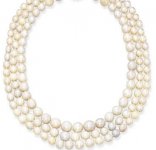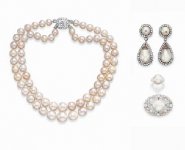Hello,
Is there any way to try to establish the value of an antique strand of natural pearls?
I have a strand with 120 pearls, each about 6mm in diameter and just about perfectly round, the color of each pearl is a creamy white and the strand is about 28 inches long with a really unique little clasp marked "835" which is an older marking for silver.
Is there any way to try to establish the value of an antique strand of natural pearls?
I have a strand with 120 pearls, each about 6mm in diameter and just about perfectly round, the color of each pearl is a creamy white and the strand is about 28 inches long with a really unique little clasp marked "835" which is an older marking for silver.




